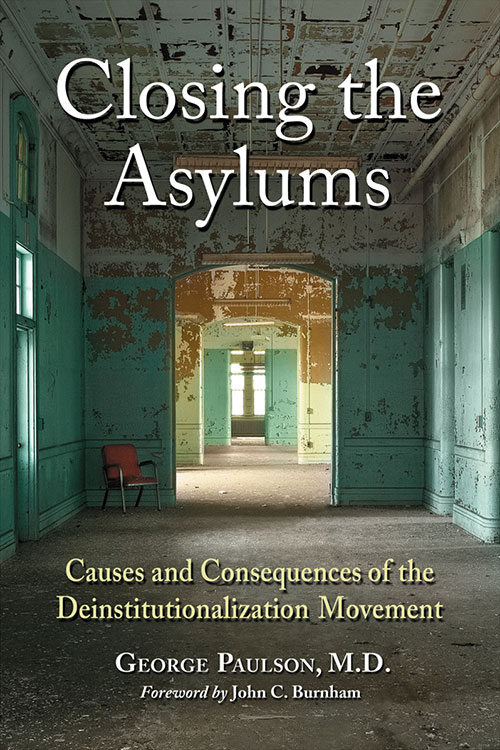Closing the Asylums
Causes and Consequences of the Deinstitutionalization Movement
$45.00
In stock
About the Book
One of the most significant medical and social initiatives of the twentieth century was the demolition of the traditional state hospitals that housed most of the mentally ill, and the placement of the patients out into the community. The causes of this deinstitutionalization included both idealism and legal pressures, newly effective medications, the establishment of nursing and group homes, the woeful inadequacy of the aging giant hospitals, and an attitudinal change that emphasized environmental and social factors, not organic ones, as primarily responsible for mental illness.
Though closing the asylums promised more freedom for many, encouraged community acceptance and enhanced outpatient opportunities, there were unintended consequences: increased homelessness, significant prison incarcerations of the mentally ill, inadequate community support or governmental funding. This book is written from the point of view of an academic neurologist who has served 60 years as an employee or consultant in typical state mental institutions in North Carolina and Ohio.
About the Author(s)
Bibliographic Details
George Paulson, M.D.
Foreword by John C. Burnham
Format: softcover (6 x 9)
Pages: 220
Bibliographic Info: 9 photos, notes, bibliography, index
Copyright Date: 2012
pISBN: 978-0-7864-7098-3
eISBN: 978-0-7864-9266-4
Imprint: McFarland
Table of Contents
Foreword by John C. Burnham 1
Preface 4
Introduction: Dorothea Dix Hospital and Hilltop, and Why I Care 8
1: Hilltop Asylum in Columbus, Ohio 29
2: Did DI Result from Attitudinal Change, and Did It Reflect New Wisdom? 49
3: Building Obsolescence and Deinstitutionalization 89
4: Did Deinstitutionalization Reflect the Arrival of Successful Medications, or Was Medication Only a New Chemical Straitjacket? 102
5: Role of New Disciplines in Mental Hospitals 114
6: Urbanization, Loss of a Rural Location 129
7: Advances in Public Health and Public Attitudes 144
8: The Increase in Social and Community Resources and Their Effect on Enhancing Freedom for the Patients 153
9: Legal Initiatives as a Major Factor in Change 160
10: Elimination from the Hospitals of the Physically Handicapped 180
11: Summary, with Consequences of Deinstitutionalization 182
Notes 201
Bibliography 205
Index 209
Book Reviews & Awards
- “Narrative history of the Dix and Hilltop hospitals…engaging. DI was pronounced unsuccessful over 20 years ago. Paulson’s timely book reminds us that little has changed”—PsycCRITIQUES
- “George Paulson’s wide experience as both a physician and a historian has made him one of the leading chroniclers of the American medical experience, impressively reflected in his prolific publications about medical figures and medical institutions. His interests have also made him a major presence as an Institute Associate in Ohio State University’s Humanities Institute. He brings to Deinstitutionalization his broad interdisciplinary knowledge and a unique personal familiarity with both of the hospitals that his study here focuses on.”—Christian Zacher, Ohio State University Humanities Institute
- “George Paulson, M.D. emerges from a remarkable and unique vantage in his writing on deinstitutionalization. He draws from a rich personal history of growing into his adult perspectives and physician expertise over the course of a half-century on the grounds of state psychiatric hospitals which are in the process of deinstitutionalizing, and combines this with his intellectual prowess and the warm heart of a caring participant. In the fifteen years that I have had the honor to professionally know and work alongside Dr. Paulson, he has consistently demonstrated his clinical competence in neurology in working with each patient, and his unquenchable systems curiosity, both bathed in his quiet and humble southern gentleman charm and eloquence. He writes Deinstitutionalization in an informal manner which allows the reader to soak in this important history, while empathically presenting numerous psychiatric stories which communicate the live meaning of deinstitutionalization. I would heartily recommend this book for all who have interest in the evolving care and treatment for those who suffer from severe mental illness.”–Marion E. Sherman, Department of Veterans Affairs, Biloxi, Mississippi.





